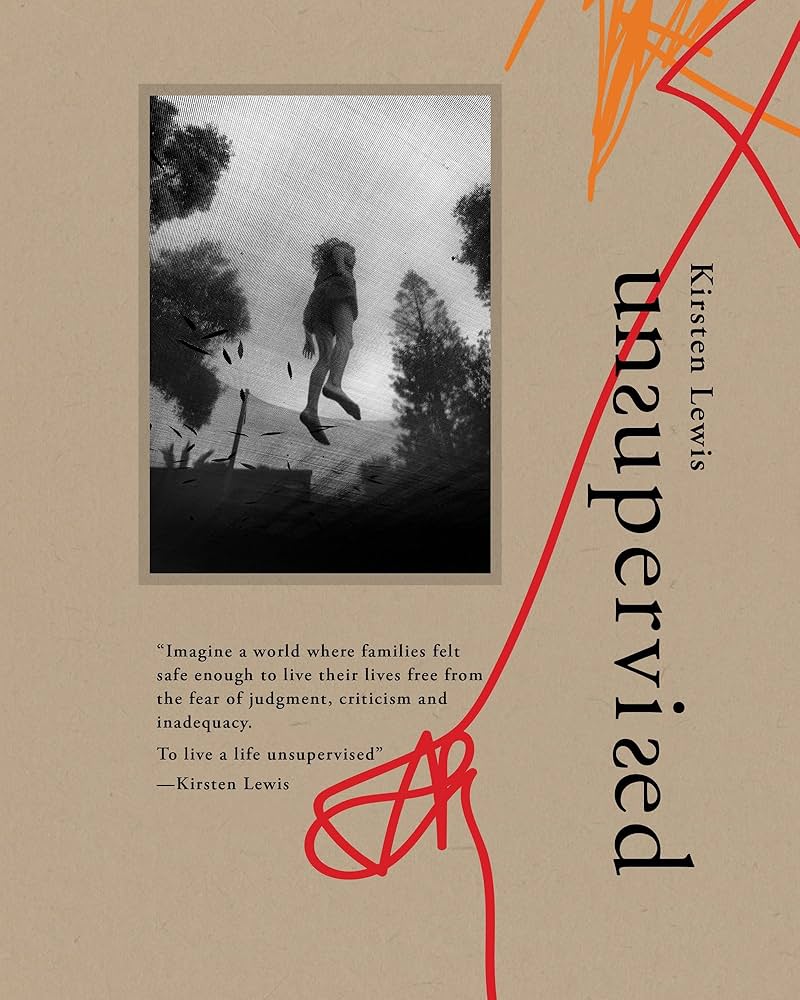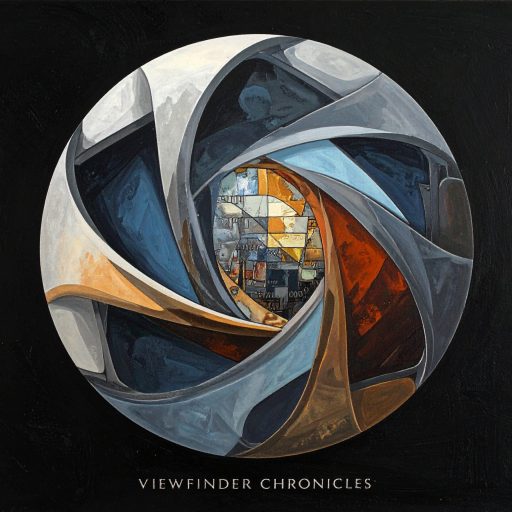
As a parent of three children, each with their own unique challenges, my daughter just finished university last year, my middle son with Tourette’s syndrome and severe autism, and my youngest with ADHD and autism, Kirsten Lewis’s Unsupervised resonates deeply with me. The book’s raw, unfiltered depiction of family life mirrors the chaotic, beautiful mess of my own household, where love and imperfection coexist daily. My own journey with ADHD and Tourette’s, coupled with my past as a skateboarder capturing gritty moments with a pocket sized Kodak, makes Lewis’s black and white snapshots feel like a visual echo of my life’s unpolished authenticity. Her work feels like a validation of the struggles and joys I’ve experienced, reminding me that parenting is a universal, messy human endeavour.
Lewis’s work is a philosophical gut punch, forcing us to confront the highly curated perfection of social media and embrace the unscripted moments that reflect a true human experience. This approach is not merely a stylistic choice, it is an advocacy for a world where families can live free from societal pressures, embracing their flaws without fear of criticism. The book underscores the shared vulnerability in parenthood, fostering a sense of global community among parents by showing that our individual struggles are part of a collective human story. This is a particularly powerful message for me, as I have often felt the weight of being a “bad parent” when my son’s autism leads to public meltdowns or when my own ADHD makes me forget important tasks. Lewis’s work, with its emphasis on shared experience and grace, reassures me that I am not alone in these struggles. The project itself is a form of personal healing for the photographer, reflecting her own journey as a queer Jewish mother in a blended family and underscoring how art can serve as a profound form of catharsis.

The book’s emotional impact is inseparable from its craftsmanship and process. Lewis’s intimate documentary approach, where she embeds herself in families’ lives for 24 to 72 hours, allows her to capture unguarded, authentic moments that feel like lived experiences rather than staged portraits. The choice of a black and white aesthetic is masterful, it strips away distractions, emphasising the raw emotion and texture of life, from tear streaked faces to quiet embraces, giving the images a timeless quality. What truly elevates the book, however, is the inclusion of ephemera. The integration of children’s drawings and letters in colour adds a tactile and deeply personal layer, making the book feel more like a cherished family scrapbook than a traditional photobook. Lewis’s curatorial intentionality is also clear in her deliberate pairing of images across pages, creating a narrative thread that highlights shared experiences across diverse families and underscores the universality of parenthood. As someone who once created comic books, I see Lewis’s curation as a visual narrative, each image a panel in a larger story of parenthood’s highs and lows.
Lewis’s photographs are not just beautiful, they are honest and deeply moving. There is a low angle shot in a living room that shows a toddler leaning into a bowl of dog water on a tiled floor next to an empty food bowl, looking up at the dog standing next to them. In the background, two other people are lounging on a sofa. This chaotic, yet peaceful, scene is a testament to the unpredictable nature of children’s curiosity and the way parents learn to find a sense of calm amidst the noise. It reminds me of the countless times my own kids have found wonder in the most mundane of objects, and the way I have learnt to pause and simply see rather than intervene. Another moment that resonates is the photograph of a dad and his young child lying side by side on a carpeted floor, both with their hands behind their heads as they do sit ups. This simple image captures the profound mirroring and connection between children and their parents, a powerful reminder of how our children watch and emulate our every move. It is a moment of shared vulnerability and physical closeness that speaks volumes about the bonds formed through everyday activity.

The collection of images continues to challenge the notions of perfection. In one chaotic dinner scene at a large table, several people are seated, but a young child is climbing over the seats to get to the table, looking down at the ground which must seem far away to them, while others sit and eat. This photograph is a perfect capture of the kind of beautiful pandemonium that defines family meals, a far cry from the staged photos we see on social media. It speaks to the reality that life is messy and that embracing that messiness is essential to a healthy family life. The book also features a close up portrait of a young child with their mouth wide open in a scream or a yell, standing outdoors in front of a rustic looking building which I believe is a boat house. This powerful image of raw emotion is a visual echo of my own son’s meltdowns, and it’s a beautiful reminder that these moments of frustration and fear are not flaws, but a natural part of being human. Lewis’s unflinching lens on these uncomfortable moments is a brave and vital act of validation for parents everywhere.

Lewis also captures moments of joy and shared humour, such as the image of a man in mid-air, jumping high above a bed where a small baby is lying down. The scene is inside a bedroom, and the dad is looking down at the laughing child, capturing the pure, uninhibited joy that children feel when their parents act silly. This image is a beautiful testament to the moments of simple play that build a child’s sense of security and love. In a more tender moment, we see a close up shot of an older woman drinking from a water fountain with water spilling from her mouth, while a young child is visible, smiling and watching contently in the blurry background. This image of intergenerational connection and quiet admiration is a subtle and powerful reminder of the bonds between family members.

The book is an unflinching look at the unvarnished truth of parenthood. There is an image of a person running through shallow water on a beach, creating a splash, while a young child is lying face down in the water after having fallen over, the adult reaching to grab the child as they fall. This image captures the raw, kinetic energy of parenthood, the constant cycle of joy, chaos, and a parent’s immediate, instinctive response to protect their child. It’s a beautiful metaphor for the experience of raising children, we run with them, we stumble with them, and we are always there to catch them when they fall.
Unsupervised feels like a love letter to parents like me, who navigate the unpredictable waves of raising children with neurodiverse conditions while battling their own. Lewis’s work reminds me of my teenage years, sneaking my Kodak Ektralite 400 into Aberdeen’s pubs and clubs, capturing candid moments of life’s rawness, much like her own documentary style. Her book echoes the gritty honesty of Bruce Davidson’s Subway and Larry Clark’s Tulsa, photobooks I pored over as a 16 year old, drawn to their unapologetic portrayal of human struggle and beauty.

Lewis, who spent fifteen years on this project, has crafted a book that is more than a collection of photographs. It is a mirror, reflecting my life as a father, a former skateboarder, and an artist at heart, reminding me to embrace the mess and find joy in the imperfect love I share with my family. She has dedicated thousands of hours to seeing and learning from incredible parents and children from diverse communities around the world. Her hope is that readers will recognise themselves reflected back in the pictures of strangers, an overlap of shared experiences in childhood and parenthood that reminds us all how much more we are connected than divided. Ultimately, as Lewis herself says, she created the book she needed. And in doing so, she has given a profound gift to all of us who are navigating the beautiful, chaotic, and utterly human journey of parenthood.
Regards
Alex
